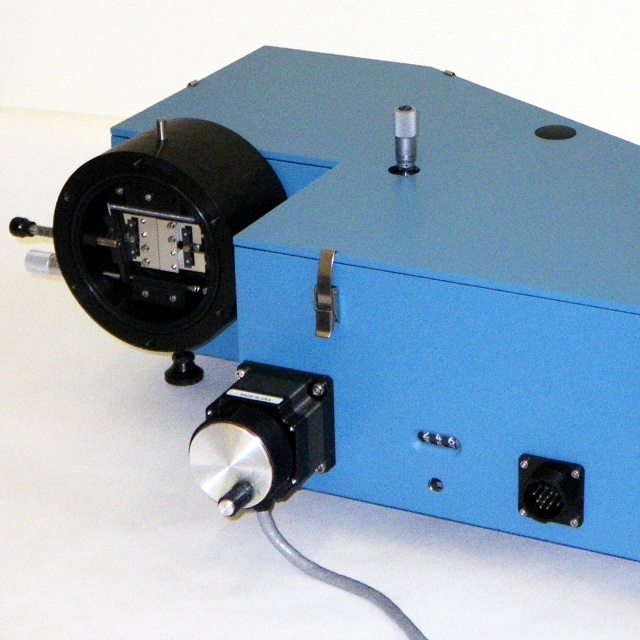Standoff Raman spectroscopy is an optical sensing technique. Among other things, it can be used to detect and identify chemical, biological and explosive activity. There is an ongoing national and international scientific effort to improve these types of detectors. The goal is to form sensing networks to provide early warning for a variety of chemical, biological, radiological, nuclear or explosive (CBRNe) weapons of mass destruction (WMD).
 McPherson Model 275DS Double Subtractive Monochromator aka Tunable UV Filter
McPherson Model 275DS Double Subtractive Monochromator aka Tunable UV Filter
One potential improvement of these Raman spectroscopy systems is to excite samples with shorter wavelengths of light. UV excitation at 213 or 244 nanometers may increases sensitivity, suppresses fluorescence and provide resonance coupling. These each improve signal-to-noise in the measurement for faster detection of trace.
McPherson’s compact double-monochromator Model 275D is ideal for deployment in these sensors. It works as a tunable filter, adjustable Raleigh edge-rejection and bandpass. It can work to wavelengths as short as 190 nanometers with no special preparation. The double-monochromator has a stable housing and wavelength tuning for easier signal optimization. Diffraction gratings with aberration correction and good efficiency from 190 nanometers ultraviolet to the infrared are available.
Spectrometer Applications:
- Raman Filtering, UV Edge Rejection
- Photoluminescence
- Radiometry (LED, light source characterization)
- Tunable High Purity Light Source
- Detector Characterization
More on the compact double monochromator:
All McPherson monochromators are available with a special wavelength controller, an extensive software package and are easy to use and integrate. The dedicated 789A-4 stepper motor controller is commanded directly in ASCII. The user can specify speed, direction, and step size increment with software commands. Homing insures calibrated performance, a feature critical in many applications. Libraries and program examples support LabVIEW™ and text-based programming.
Need more bandwidth from a tunable filter for UV-Raman:
Catering to ultraviolet resonance Raman applications, the bandwidth aperture of the model 275DS is available in XXL sizes. With the larger central aperture, users collect a wider range of spectra while laser scatter is blocked. Combined with fiber optic coupling and tertiary spectrograph, highest performance is attained with UV tunable rejection and wavelength positioning.